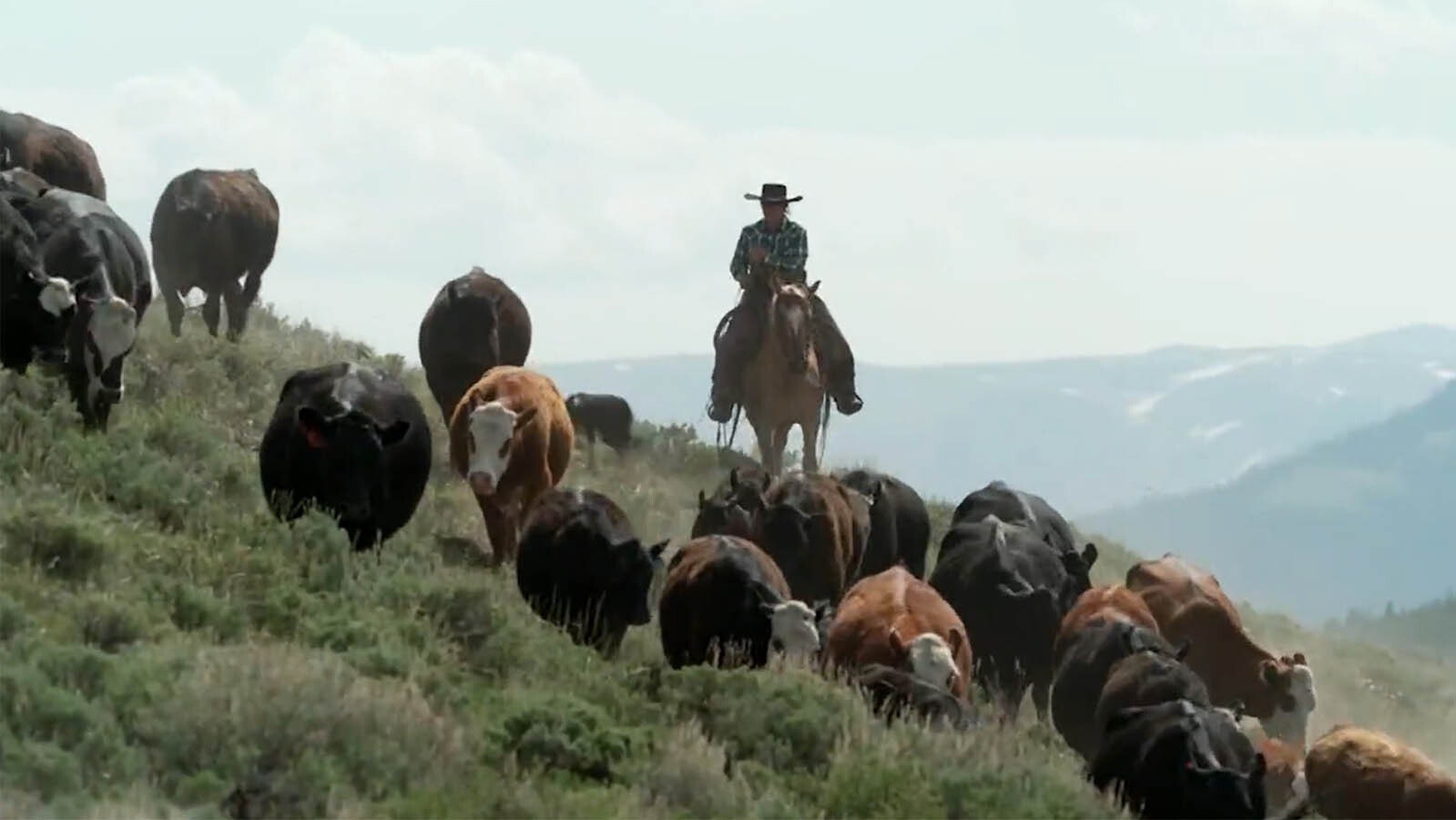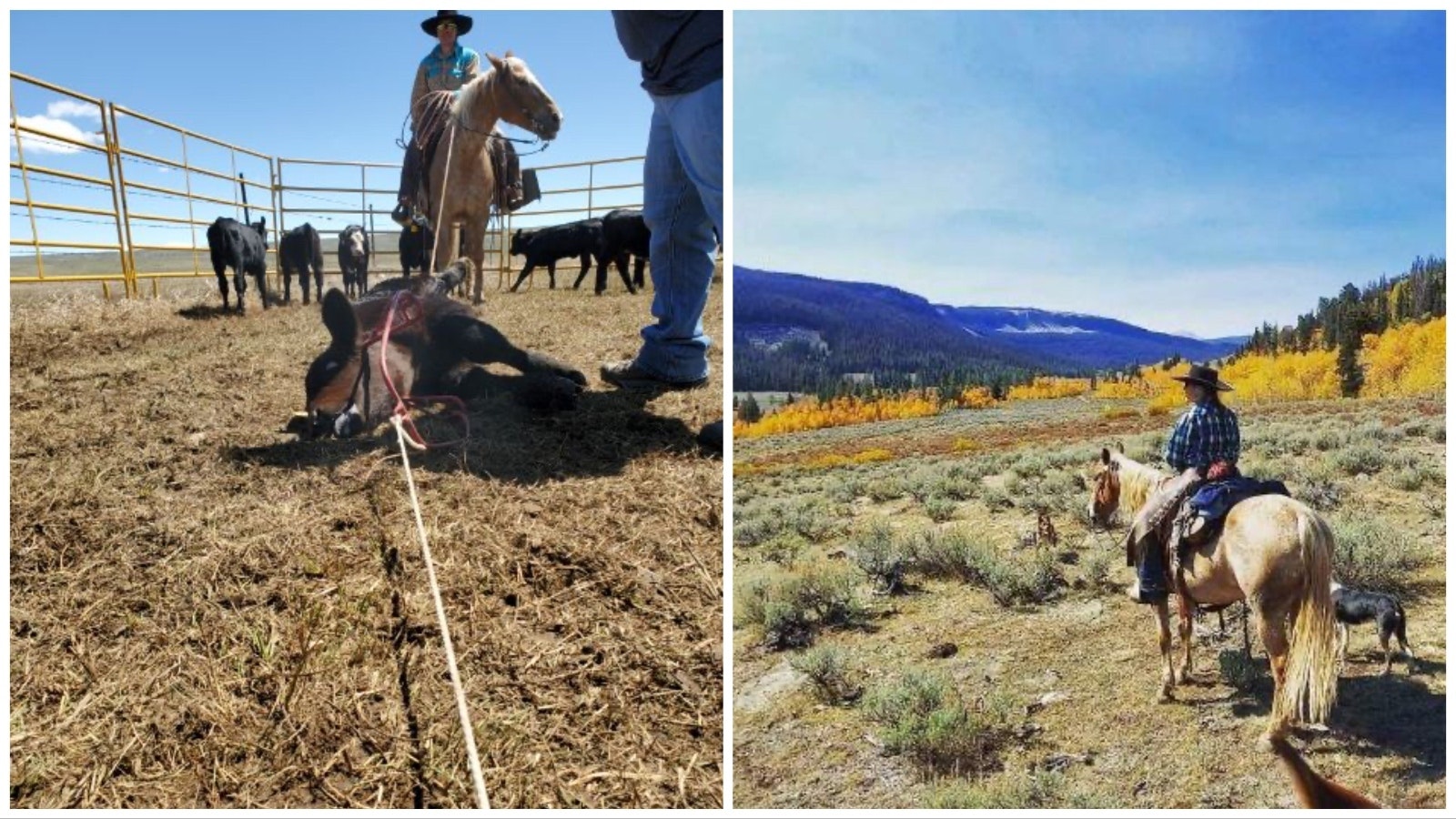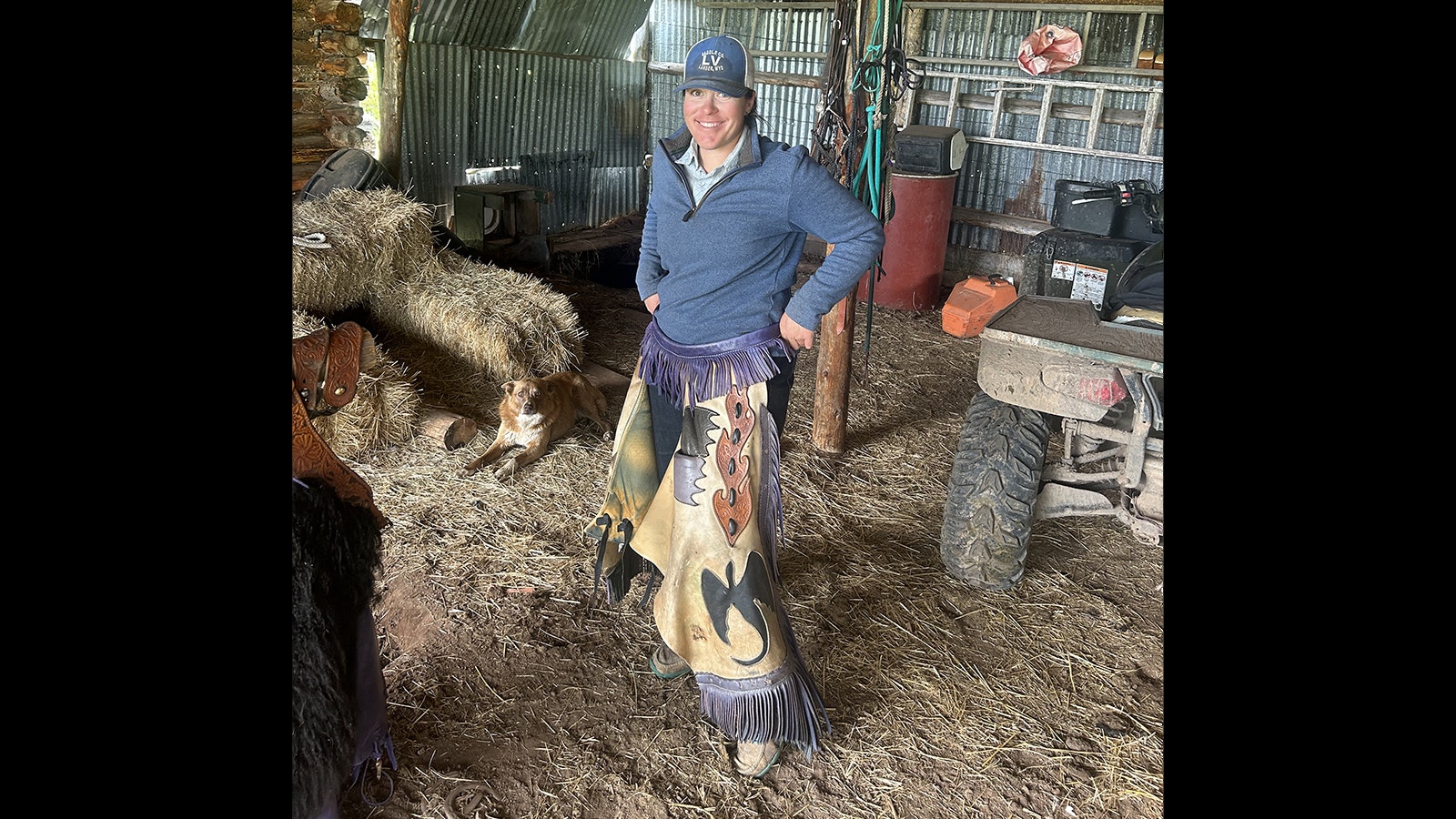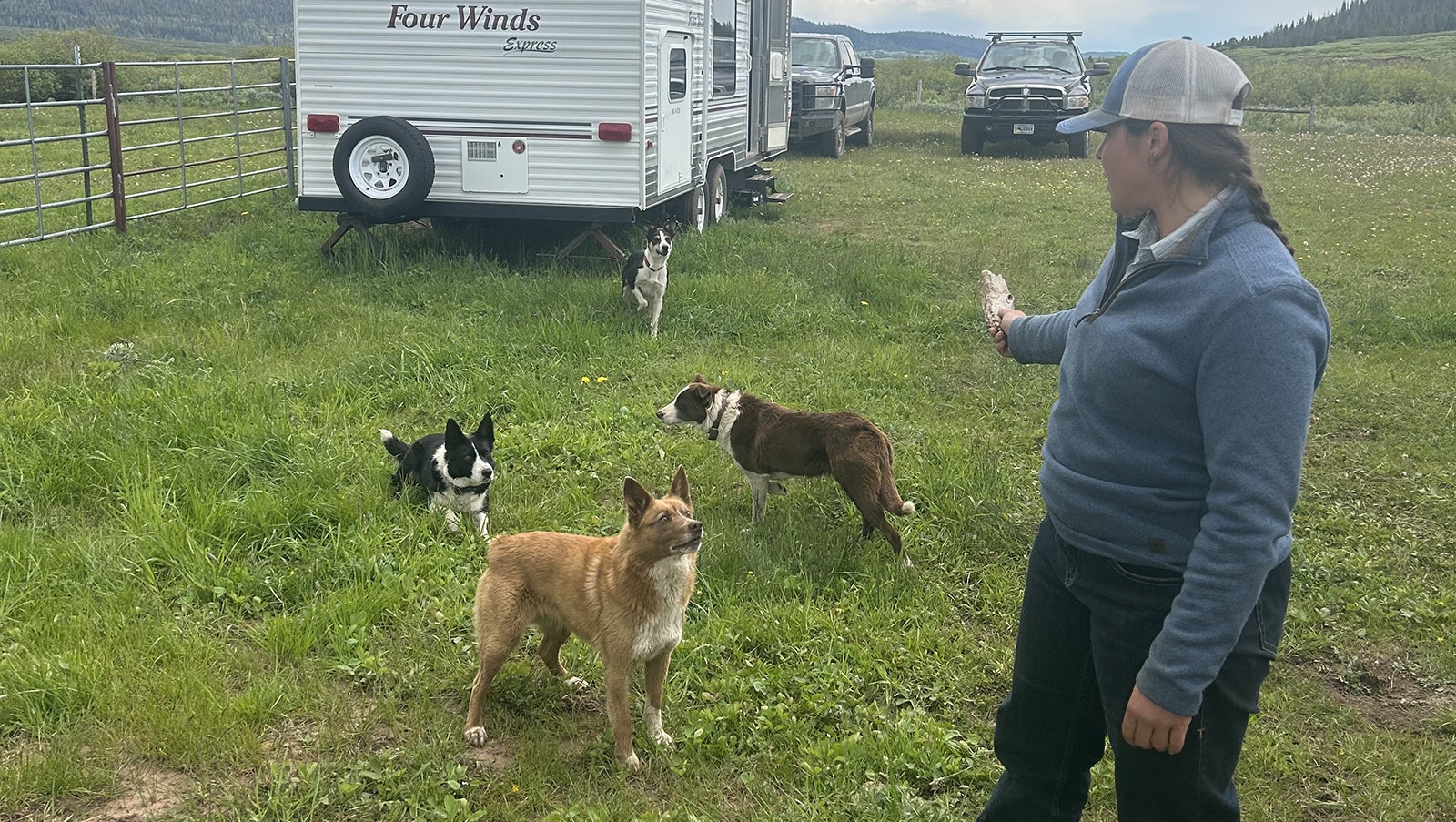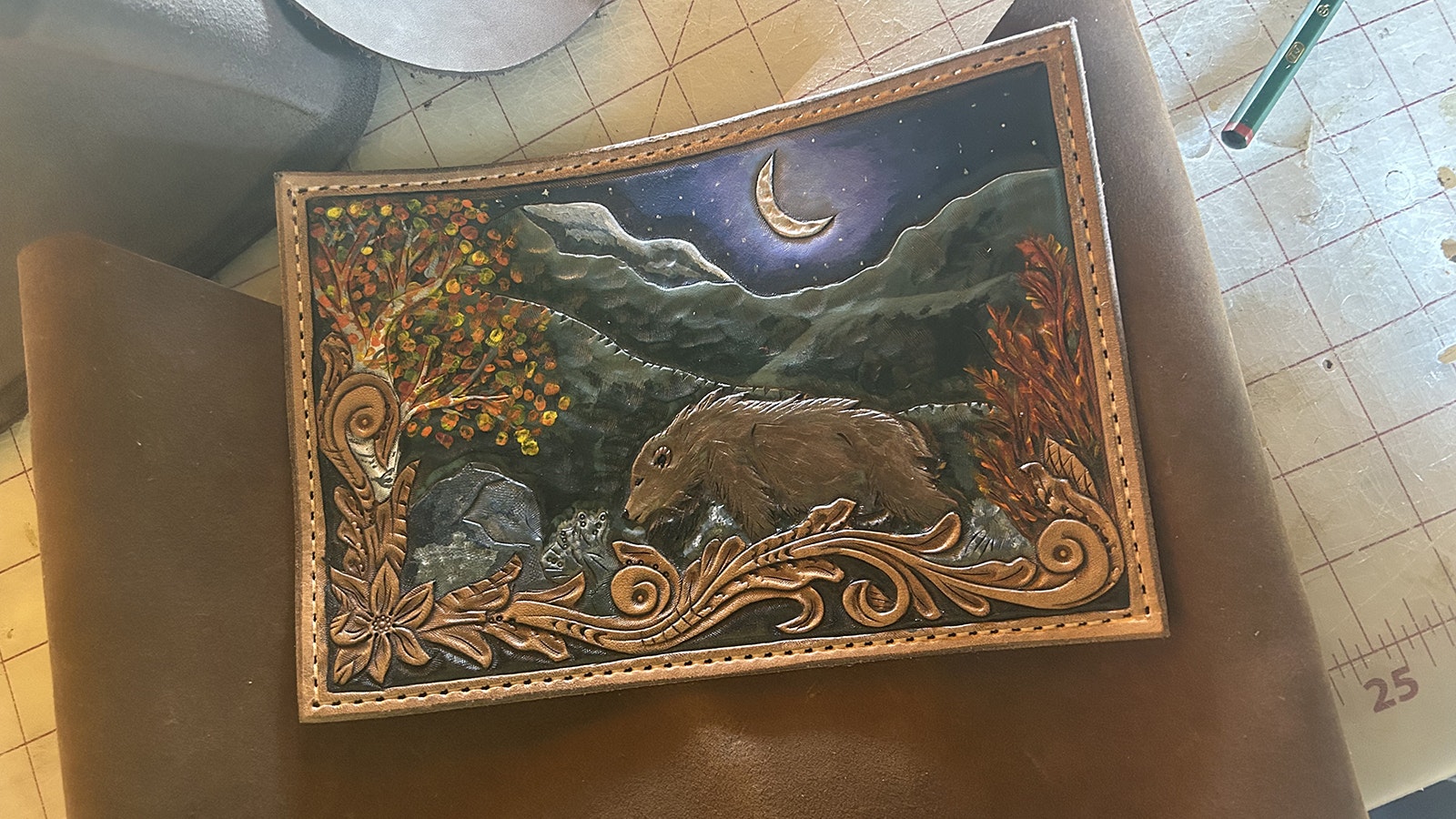Brittany Heseltine knows straight away when a predator is nearby. The cattle she tends tell her when something's wrong.
When they're calm, paired up and grazing, all is well. When the cows are not cooperative, spread out and bawling for their calves, there's a chance she'll find a bloody mess.
Run-ins with predators, namely grizzly bears, black bears and wolves can be fairly common here near the headwaters of the Green River.
Heseltine is a foreman and range rider for the Upper Green River Cattle Association. She's 31 and has worked this job for the last five years. She has three horses, four dogs, four other range riders, and 800 cattle in her charge.
She spends five months each year, June through October, mostly on her own, working in the shadow of the Wind River Range. Days off are as rare as shooting stars, but she says it's not a bad place to hang her hat.
People from all over the world travel through this area every summer on the Continental Divide Trail.
The road through here is as rough as a corn cob. It leads over Union Pass and connects Dubois with Highway 352 at the north end of Kendall Valley.
"If I get lonely and want to talk to someone, there's always people on the road," she said.
Sometimes the ranchers she works for stop in to say hello and bring salt for the cattle. Her boyfriend and family members stop in once in a while too.
The Green River Drift
Eleven ranchers are members of the cattle association. They turn out about 5,000 head of cattle every spring. It's part of the famous Green River Drift, a 58-mile-long cattle trail used continuously since the 1890s.
The Drift as it's known, was featured by the television news magazine “60 Minutes” in 2021. Heseltine was featured in a segment of that program.
Day by Day
Every morning she saddles up and heads out among the grazing pastures surrounded by dense mixed conifer forest. The grass is lush this year.
She understands that predators own the night and that makes mornings the most interesting time of the day. She's like a detective traveling out to investigate a potential crime scene.
First off, her border collies, Tory, Jenny, Gyp and Roe fan out among the willows in a river bottom. They will "clean out" this area, pushing cattle uphill to the open ridges and sidehills where she wants them to graze for the day.
"The cattle tend to move down into the river bottom at night," she said. "They prefer to be out on open, flat ground so there aren't a lot of obstacles in their way if they need to escape. But they come down here because they know it's safer when they're closer to people."
After they clean the river bottom, she rides among the herd and checks for any animals that might have respiratory problems or lameness. Dealing with foot rot, pneumonia, pink eye and other ailments are among a range rider's common tasks.
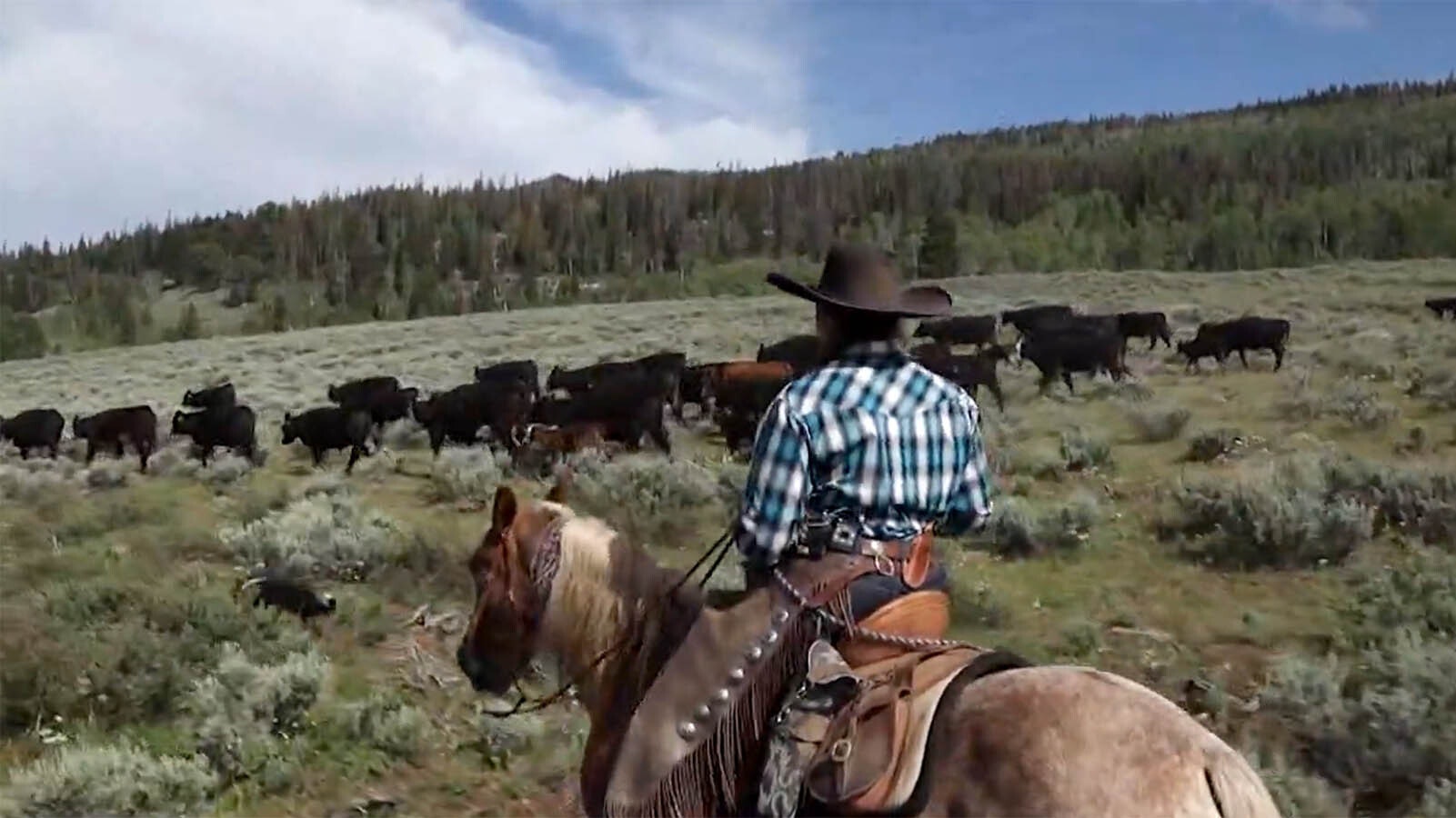
Doctoring
Her saddlebag unbuckles and folds open to reveal a veterinary kit containing a large bottle of oxytetracycline, syringes, needles and a marking crayon. With a sick calf she'll rope it, throw it and hold it down with her knees to give it a shot, while her horse holds the rope tight. Then she'll mark it with a crayon and record the calf's ear tag number and brand.
She knows how to estimate a sick cow's weight and calculate the correct dosage of medicine. Heseltine earned two associate degrees from Western Wyoming College in Powell and a Bachelor of Animal Science from the University of Wyoming.
With the bigger yearlings, cows and bulls she has the option to call for help from another range rider, or she knows a couple of tricks. The first, easiest, and less risky is to pull out her dart gun and administer medicine from a distance.
The other is to rope the animal and if it will stand quietly with the rope around its neck she will toss a length of the rope around the front of its body on the ground and try to get it to step over the rope. If it steps just right she can catch the rear legs and the head at the same time and put it on the ground where she can administer medicine.
Most of the ailments she encounters aren't difficult to diagnose, she said. With foot rot there will be swelling and lameness, pink eye causes runny red eyes and with respiratory diseases they have a hard time breathing.
"When they're stressed their ears are droopy and they'll hold their head low," she said. "But you have to know the difference between sick and just tired because you just pushed them up a hill."
Investigating Depredation
"Walking wounded" is another problem she sometimes encounters. This is when a calf is injured by a predator but still on its feet. When this happens, she ropes and throws the animal on the ground and then ties its legs together. It waits that way until Wyoming Game and Fish shows up to investigate what happened.
She will use an In-Reach satellite phone to send Game and Fish a message and a location with a global position sensor. Then a predator biologist will drive up and investigate what happened and try to pin down the culprit.
Bears generally leave wounds on an animal's back between its front shoulders and on its brisket. Wolves leave bite marks on the back legs and rump. When they find a dead cow or calf they will skin it and look for teeth marks to determine what killed it, she said.
Ranchers can receive a payout from the state when predators are proven responsible for livestock deaths.
Sometimes she will find an animal that died from natural causes and a predator came along after the death and fed on the carcass. In this case she'll skin the carcass and look for pooling blood or bruising from bite marks. If there's no bruising of the meat or pooling blood under the hide, it's most likely the predator didn't kill it, she said.
More Day To Day
On other days Heseltine will ride along and fix fences, pack salt blocks for the cattle to lick or move cattle from one pasture to the next. When it's time to change pastures a Forest Service range manager and the grazing association president come up and take measurements of the plants growing at specified places. They measure the same spots every year.
"They take measurements at several sites and calculate an average length of the grass," she said. "If the average meets their requirements, then I have a couple of days before I change pastures. If the average is below their requirements, I start moving cattle immediately."
What’s required
Range riders provide their own horses, dogs, horse trailers, trucks and tack. They also shoe their own horses so they need the tools for that job. The grazing association provides five cabins for the riders. Heseltine starts the season living in a house trailer and will move to a higher elevation cabin later this summer.
In her spare time she likes Marvel movies and fantasy novels. She also spends time making chaps, purses and other leather goods. She has a small house trailer where she keeps a heavy-duty leather sewing machine and the other tools of that trade.
As a youngster she rode horses but didn't have any experience with livestock until she was 16. Her stepfather Eddie Wardell, a Big Piney rancher, took her along to fix fences once and she met a woman range rider and decided that was what she wanted.
"Eddie wasn't sure if I could handle this work, but after college they had an opening and I jumped at it," she said. "After my first year, Albert (Sommers) who was the grazing association president at the time, said 'you're coming back next year right?' I said if you'll have me. Now the current president Coke Landers told me I can't quit."
John Thompson can be reached at John@CowboyStateDaily.com

